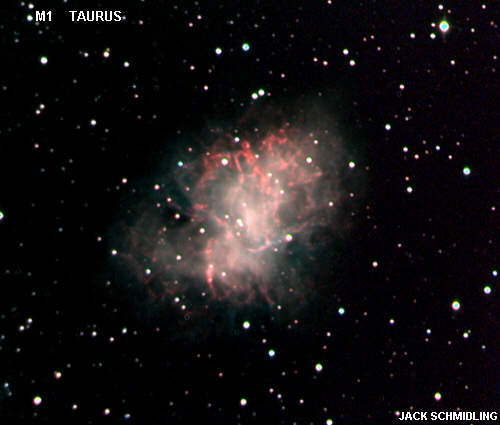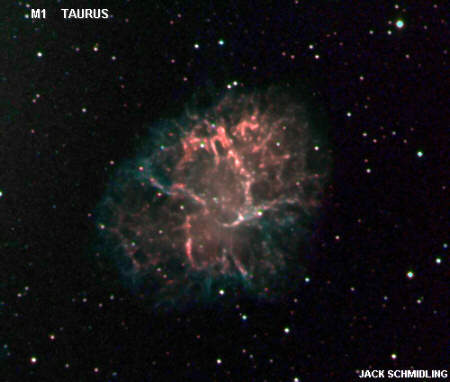
| Astronomy | JSP Homepage |
One
of the most studied objects in the heavens, the Crab Nebula is now
known to be the remnants of a supernova explosion. It is an expanding
gas cloud that once was the outer region of a giant star. It is
expanding at the rate of about 600 miles per second or 50 million miles
per day.
What remains of the actual star is even more incredible. After blowing off much of the outer shell, the remaining mass collapsed into an incredibly tiny and dense object. So dense that atoms in the usual sense do not exist, only neutrons. It is estimated that roughly the mass of our Sun is compressed into an object only a few miles in diameter. It is known as a "Neutron Star".
If that's not enough to make it interesting, it rotates at the incredible rate of 30 revolutions per second. That's about the same speed as the armature in a typical electric motor. It also happens to emit a beam of radio energy from the magnetic poles that appears to pulse at the rate of 30 pulses per second each time it passes our point of view. This special type of neutron star is called a "Pulsar".
The Pulsar can be seen in the above photo as the lower right of the close double in the center of the nebula.
The Crab Nebula is about 6300 light years away and blazed with the light of 400 million Suns for about two weeks in 1054 AD. It is currently about 6 light years in diameter. Were it the sun, it would not only engulf the entire Solar System but also our neighbor stars. It most assuredly would not have been a very welcome "guest" if it were anywhere near our Sun. We would not be here to wonder at it.
